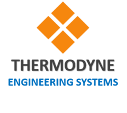Savemax Boilers | the standard 3 pass smoke-tube design Gas & Oil fired steam boilers, having internal water cooled chamber. The superior and options build it the best selection for method heating necessities of the trade nowadays.
Advantages
• High potency of 88% on NCV(Net Calorific Value) saves running prices.
• High large convective heating surface in the second & third pass tubes ensures glorious heat transfer
• Large water holding and steam holding house provides fast response to unsteady steam demands.
• Very large heat transfer surface reduces thermal stresses on the boiler surfaces.
• Dry steam reduces the time interval, saves steam and improves quality of processed product
• Horizontal packaged boilers - less site work & fast authorization
Capacity vary
It is capacities to out there from one TPH to ten TPH
Advantages
• High potency of 88% on NCV(Net Calorific Value) saves running prices.
• High large convective heating surface in the second & third pass tubes ensures glorious heat transfer
• Large water holding and steam holding house provides fast response to unsteady steam demands.
• Very large heat transfer surface reduces thermal stresses on the boiler surfaces.
• Dry steam reduces the time interval, saves steam and improves quality of processed product
• Horizontal packaged boilers - less site work & fast authorization
Capacity vary
It is capacities to out there from one TPH to ten TPH
 |
| Gas & Oil Fired Boilers |


Comments
Post a Comment